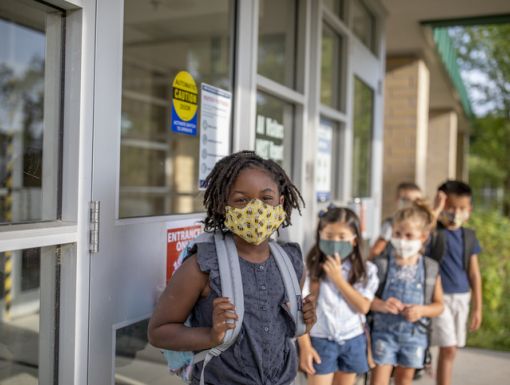
Back to School: How Much Should Your Child’s Backpack Weigh?
After summer break, your children are getting back into the swing of a school routine. Between finding their classrooms, navigating new schedules and making sure they get their homework done, there’s a lot for your student to consider at the beginning of a new school year. Even parents have a to-do list a mile long: Gather school supplies, buy textbooks and outfit those little scholars in their latest sizes of uniforms. One thing that sometimes gets overlooked in the excitement of school supply shopping is backpack safety.
Backpacks are essential for children to carry items to and from school. However, the weight of items can quickly add up and become too heavy for a child to carry safely. A general rule of thumb is that a backpack should weigh no more than 10% of a child’s body weight. This means a child weighing 50 pounds shouldn’t carry a backpack weighing more than 5 pounds. Seems easy, right? In practice, researchers found that students were carrying double or triple the recommended weight – with some backpacks of middle-school students weighing a whopping 30 pounds.
What’s wrong with a heavy backpack?
Aside from being downright uncomfortable, continuous wear of a bag that’s over-weighted can lead to back pain and other injuries. The U.S. Consumer Product Safety Commission reports that backpack injuries send about 5,000 children to the emergency room every year. Still more students are treated in non-emergency clinical settings (like physical or occupational therapy) for backpack-related issues annually. Kids’ muscle and bone structures are still developing, so it’s important we take a few precautions to help prevent chronic back pain and injury.
How can I tell if my child’s bag is too heavy?
The easiest way to check is probably to weigh the backpack to see if it’s under 10% of your student’s body weight, but you can also look for these physical signs on your child:
- Changes in posture such as rounded shoulders or leaning too much in any direction
- Aching back, shoulders and neck
- Tingling arms or hands
- Strap marks or indentations on shoulders
- Struggles to put on or take off the bag
What can I do now?
If you find your child’s backpack is too heavy, consider the following ways to help. Picking a bag is half the battle. Then, teach them the right way to load it up and wear it.
Choosing the right backpack:
- Backpacks come in different sizes. Choose a backpack that is the right size for your child: It should not be wider than the shoulders or fall below the top of the hipbones.
- Choose a backpack that has two wide, padded shoulder straps.
- Avoid single-strap or cross-body options that can put uneven stress on a single shoulder and affect posture.
- If your child regularly needs to carry a heavy backpack, consider using a bag on wheels. If you do opt for a rolling bag, ensure the model is small enough to fit in your student’s locker, and check with the school to make sure these types of bags are allowed. Also consider the route: If your child often uses the stairs at school, a rolling bag may not be the right choice.
Loading the backpack:
- Reduce items carried in backpack to only those essential for use that day.
- Load heaviest items close to the body. Use designated laptop spaces for laptops.
- Load lightest items away from the body. Use smaller pockets for items like pens and pencils.
- Center items within the pack to ensure proper posture while wearing.
- Allow your child to carry large books with their arms.
Carrying the backpack:
- Pick up the backpack by bending at the knees, not the waist.
- Adjust shoulder straps so that the backpack sits between the shoulders and hips. The backpack should rest snugly against the back.
- Utilize both shoulder straps for even distribution of weight to prevent injury.
- Secure chest straps and hip belts.
Help your kids follow these tips to prevent backpack injury. If your star pupil does begin to complain of back pain or shows other signs of fatigue or muscle strain, it may be time to talk to their doctor. Your pediatrician may have additional recommendations to ease the strain, or they may suggest getting started with a physical or occupational therapist.


